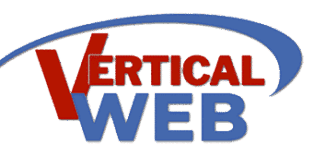Conversion rate optimization requires conscious planning and execution. It cannot be done effectively with mechanical tools standard to the SEM industry. Most generic web analytics focus on the number of hits the website receives. This alone will tell an organization very little about the true effectiveness of the site. Not all hits on the site come from human beings. Many are generated by search engines and other forms of software. In order to see just how many prospects are visiting the site and contacting the company after studying its content, we have to track the movements of unique visitors within the site once they arrive.
Our type of SEO, known as organic SEO, relies extensively on copywriting to market the client company. There are other ways of marketing on the Internet, but we discovered long ago that information itself is the best tool to use in the Information Age. Consequently, you will find a great deal of content on the sites we build that enumerates the benefits that our clients offer to their respective target markets. These articles and blogs are optimized with key phrases that users are known to enter into search engines. This is actually the foundation of conversion rate optimization, because it draws the searcher directly to a web page that discusses the very thing for which they are searching.
We often use the word “landing page” to describe any page that the prospect lands on when conducting a search. This is where the true measure of a website can actually be gauged. If prospects arrive on a page and begin to immediately navigate through the site map, then they could be telling us through their actions that the landing page lacks sufficient interest to hold their attention. The conversion rate optimization of that particular page is obviously low and has little potential to generate a return on investment until it is modified with enhanced customer experience in mind.
A web developer’s objective should always be to develop each page on the website into a landing page whose relevance to online queries so rivets the readers’ attention that he or she remains on the page for more than a few seconds. This is the first actual step in conversion rate optimization—strong reader interest. Content and supporting graphics must be intelligently presented so as to inform the reader about the benefits offered by the client company. At the same time, both the content and the graphics should motivate the reader to contact the client company. This is known as a call to action, and it is typically stated both in content and graphics that strongly encourage the reader to ask the organization for more information. Any time a reader does so, a sales lead is generated.
Many clients wonder if we can actually track the number of people that call an account representative as the result of visiting the website. The simple answer to this question is, “Yes.” The internal coding of the website allows us to monitor clicks and mouse movements from each unique visitor. Time and date of these movements are recorded. Of particular importance is any mouse click on a call to action button that provides the client company’s phone number. Interest in obtaining an organization’s contact phone number indicates genuine interest in that company’s offerings.
These statistics represent the most important data in the conversion rate optimization report because they can be cross referenced against inbound phone records to the client company’s sales department.

